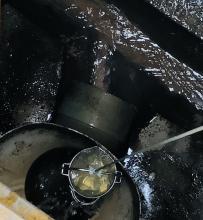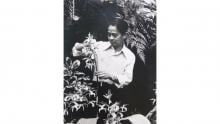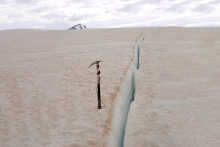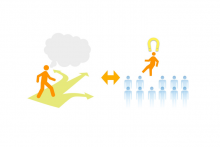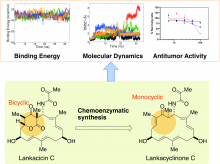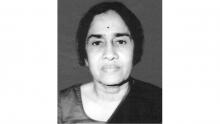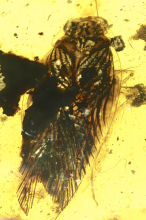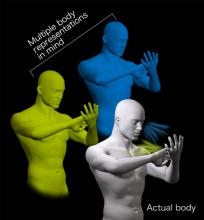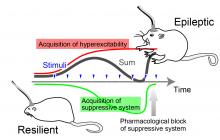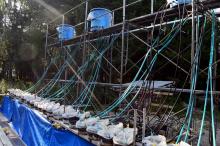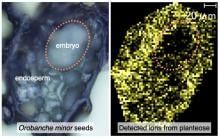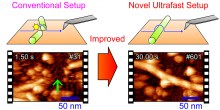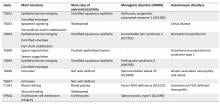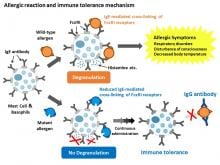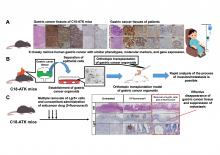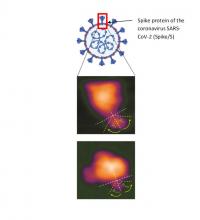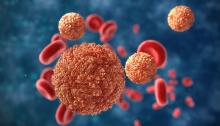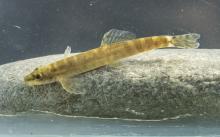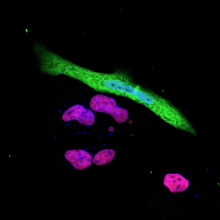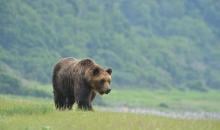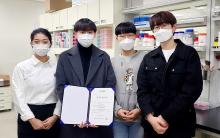Biology
News
03 Feb 2022
Giants in History: Rapee Sagarik (4 December 1922 – 17 February 2018) was Thailand’s renowned expert on orchids. Sagarik dedicated his career to the research of native orchids in Thailand.
02 Feb 2022
Researchers from Institute of Industrial Science, The University of Tokyo find that the occurrence of red snow is closely tied to the length of the snow melt season and new snowfall events
01 Feb 2022
A new study provides a theoretical basis for the influence of learning from ancestors on the acceleration of natural selection using Fisher’s fundamental theorem
31 Jan 2022
Garden soil houses a variety of bacteria and their natural byproducts — including one that may help halt tumor growth. Lankacidins are molecules that can be isolated from Strepomyces rochei, a common bacterium in soil. In addition to antimicrobial properties, a type of lankacidins, called lankacidin C, can inhibit tumor activity in various cancer cell lines, including leukemia, melanoma, ovarian and breast cancers. Lankacidin C offers a potential foundation on which to design anticancer drugs, but its structure is complicated and difficult to manipulate, according to an international research group. The same group recently identified where antitumor activity is housed on the molecule and has now used that information to simplify lankacidin as a potential starting point to engineer treatments.
26 Jan 2022
Giants in History: In 1939, biochemist Kamala Sohonie (18 June 1911 – 28 June 1998) became the first woman to be accepted into the Indian Institute of Science (IISc).
25 Jan 2022
Studying the sensory organs of a 100-million-year-old cockroach offers new insights into how the species may have lived.

24 Jan 2022
Researchers from Hokkaido University have proposed a framework to assist in the demarcation between genetically modified organisms and genome-edited organisms, taking into account both scientific and socio-ethical considerations.

21 Jan 2022
A booster dose of the Pfizer–BioNTech vaccine (BNT162b2) against SARS-CoV-2 after an initial two doses of either the CoronaVac inactivated virus vaccine or Pfizer–BioNTech mRNA vaccine is shown to provide protection against the Omicron variant, in a pair of papers published in Nature Medicine.
21 Jan 2022
Our brain maps out our body to facilitate accurate motor control. For a century, the body map has been thought to have applied to all types of motor actions. Now, a research group has revealed that the body relies on multiple maps based on the choice of motor system.
17 Jan 2022
Patients with epilepsy must take medicine to manage seizures. Even then, only 65% are able to control their symptoms, rendering invasive surgery the only cure. Now, a research group has investigated a new stimulation paradigm that could cultivate greater resistance to epilepsy.
12 Jan 2022
Predator species may buffer the negative impacts of climate change by mitigating against the loss of biodiversity, according to new research led by scientists in Trinity College Dublin and joined by scientists at Hokkaido University
06 Jan 2022
Enzymatic hydrolysis of planteose: α-Galactosidase is a promising molecular target for root parasitic weed control
04 Jan 2022
Researchers at Kanazawa University report in Applied Physics Letters the design of an ultrafast amplitude detector for use in high-speed atomic force microscopy. The detector will enable the real-time recording of fast dynamical processes of biomolecules.
23 Dec 2021
By searching for the protein transglutaminase 1 (TGM1) among patients with various autoimmune skin diseases, researchers have successfully identified a separate disease that
can be linked to autoimmunity against TGM1. This backward method
demonstrates a new way of identifying autoantigens as markers for various
diseases. By letting autoantigens point to the disease, diagnosis and
treatment can be facilitated, according to the study now published in PNAS.
22 Dec 2021
Scientists have identified a series of molecular candidates for those parts of dog allergens that cause immune reactions in people—the first step in developing a vaccine against most causes of dog allergies.
22 Dec 2021
We have succeeded in establishing a mouse model that develops gastric cancer closely resembling advanced human gastric cancer. Using this model, we have discovered gastric cancer stem cells, i.e. Lgr5+ gastric cancer cells, essential for the development, maintenance, and metastasis of cancer. Our study provides an experimental system that enables detailed analysis of highly malignant gastric cancer and is expected to lead to the development of a breakthrough treatment for advanced human gastric cancer.
17 Dec 2021
The discovery of the first millipede with more than 1,000 legs is reported in Scientific Reports this week. Prior to this, no millipede had been found with more than 750 legs.
16 Dec 2021
Researchers are closer to understanding potential common features of sources of oxidative stress observed in several diseases, from Parkinson’s disease to cancer.
16 Dec 2021
Susan Lim (14 February 1952 – 2 August 2014) was a Malaysian parasitologist who specialized in studying a class of flatworms, the Monogeans, which are parasites of fishes.
15 Dec 2021
In a recent study published in the Journal of Extracellular Vesicles researchers from Kanazawa University have visualized structural changes on the surface of SARS-CoV-2 that enable it to enter human cells.
15 Dec 2021
Zika virus infection hijacks glucose metabolism for its own good and to the detriment of infected foetuses.
10 Dec 2021
Asthma sufferers generally find their condition gets worse at night. Now a research group may understand why. Melatonin, a sleep hormone that is sometimes prescribed to treat insomnia, exasperates the constriction of the bronchus - the pathway that moves air to and from your lungs.
10 Dec 2021
The critically endangered Batman River loach is the first of Shoal and Re:wild's Top 10 Most Wanted Lost Fishes to be rediscovered
07 Dec 2021
Julian Arca Banzon (13 March 1908 – 13 September 1988) was a biochemist from the Philippines who was a pioneer in alternative fuel research.
07 Dec 2021
Scientists at Hokkaido University and Texas A&M University have identified a key mechanism used by the SARS-CoV-2 virus to evade host immune systems.
23 Nov 2021
Giants in History: Min Chueh Chang (10 October 1908 – 5 June 1991) was a Chinese-American biologist who studied fertilization in mammalian reproduction.
23 Nov 2021
A joint research team at the Division of Biotechnology, DGIST, confirmed that microplastics(MPs) ingested orally accumulate in the brain and act as neurotoxic substances.
18 Nov 2021
Surveys have revealed an upward trend in the number of brown bears over the past three decades in Hokkaido, Japan's northernmost island. Researchers at Hokkaido University have been investigating the causes and implications of the increase.
09 Nov 2021
Researchers from DGIST explore the role of symbiotic skin bacteria in wound healing for different fish species
Events
Sorry, nothing coming up for this discipline
Researchers
Sorry, nothing coming up for this discipline
- « first
- ‹ previous
- 1
- 2
- 3
Giants in history
Sorry, nothing coming up for this discipline
- « first
- ‹ previous
- 1
- 2
- 3


